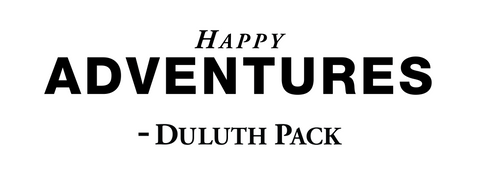** Celebrating one of our favorite months, June, which is also National Camping Month! Show Us Your BWCAW permit up to 10 days from your entry date and get $5 off your purchase in-store only. Minimum of $15 purchase only. For the month of June 2024 only. **
Embarking on a canoe trip through the Boundary Waters Canoe Area Wilderness (BWCAW) is an adventure that promises unparalleled tranquility, breathtaking natural landscapes, and an immersive outdoor experience. Spanning over a million acres along the Minnesota-Canada border, the BWCAW offers over 1,200 miles of canoe routes and over 2,000 campsites. Preparing for a week-long journey through this pristine wilderness means packing smart, ensuring you have all you need while respecting the leave-no-trace principles that protect this unique area. Here’s your ultimate guide to packing for your Boundary Waters adventure.
Essential Gear
1. Canoe and Paddles: This is a given. If you don’t own a canoe, numerous outfitters in the area offer rentals, including paddles and personal flotation devices (PFDs).
2. Personal Flotation Device (PFD): Safety first. Ensure your PFD fits well and is comfortable enough for long days of paddling.
3. Packs: Dry bags or barrels are essential for keeping your gear dry. Consider multiple sizes for different needs, such as food, clothing, and electronics.
4. Map and Compass: While GPS devices are useful, the wilderness is a place where traditional navigation skills with a map and compass are invaluable (and sometimes necessary).
Shelter and Sleep System
1. Tent with Rainfly: Weather in the BWCAW can be unpredictable. A lightweight, waterproof tent with a good rainfly is essential.
2. Sleeping Bag: Nights can be cool, even in summer. Choose a sleeping bag rated for the lowest possible temperatures you might encounter.
3. Sleeping Pad: A good night’s sleep is crucial. A lightweight, inflatable pad or bedroll, not only provides comfort but also insulation from the ground.
4. Tarp: An additional tarp can provide a sheltered area in your campsite for cooking and socializing, especially useful during rain.
Clothing
Packing clothing for the BWCAW is all about layers and quick-drying materials. Avoid cotton, as it takes a long time to dry.
1. Base Layer: Moisture-wicking shirts and underwear. 2. Insulation Layer: Fleece or wool sweaters and pants for cooler evenings and mornings. 3. Outer Layer: A waterproof and windproof jacket is essential. 4. Footwear: Quick-drying water shoes for paddling and waterproof hiking boots for portages and camp. Don’t forget quality socks! 5. Hats and Gloves: A wide-brimmed hat for sun protection and warm gloves for cooler temperatures.
Kitchen Essentials
1. Portable Stove: A lightweight camping stove with fuel. Fire restrictions are common, making a stove necessary for cooking.
2. Cookware and Utensils: A pot, pan, utensils, and a portable coffee/tea maker. Consider eco-friendly, biodegradable soap for cleaning.
3. Water Treatment: A water filter or purification tablets. All drinking water must be treated.
4. Food: Plan calorie-dense, easy-to-prepare meals. Pack a bit extra as a contingency.
Safety and Miscellaneous
1. First Aid Kit: Include personal medications, insect repellent, sunscreen, and blister care items. A portable pocket shower is a nice addition as well!
2. Repair Kit: Duct tape, multi-tool, spare parts for the stove, and a sewing kit can save the day.
3. Lighting: Headlamps and a waterproof flashlight, with extra batteries.
4. Fire Starting Kit: Waterproof matches, lighter, and firestarter (use responsibly and only where permitted).
5. Leave No Trace: Pack out what you pack in. Biodegradable soap, a small shovel for cat holes (if necessary), and trash bags are essential.
Packing for the BWCAW is about balance — bringing enough to be comfortable without overburdening yourself on portages. Each item should serve a purpose, and ideally more than one. Remember, the essence of the BWCAW experience is in its serene beauty and the simple, rhythmic pattern of paddle, portage, and camp. With careful preparation, your week in the wilderness will be an unforgettable adventure.
Happy paddling, friends!

